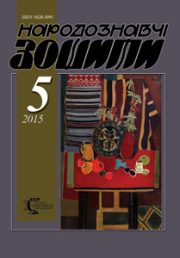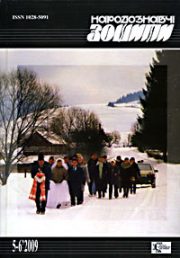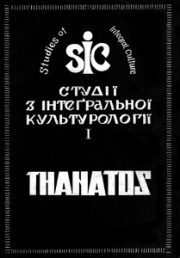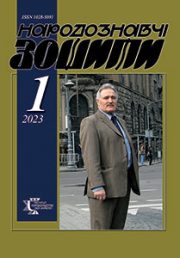The Ethnology Notebooks. 2020. № 3 (153), 660—684
UDK 39:[746.3.074:069.426](477.81/82+73)”195″Ю.Шумовський
DOI https://doi.org/10.15407/nz2020.03.660
YAREMCHYK Valentyna
ORCID ID: https://orcid.org/0000-0003-3445-3027
Post-graduate student of the department
of the modern ethnology of the Institute
of Ethnology of the National Academy of Sciences of Ukraine,
Svobody Avenue 15, 79000, Lviv, Ukraine.
Contacts: e-mail: v_viktorivna@ukr.net
Abstract. Studies on the history of the Ukrainian ethnography of the first half of the twentieth century are important because it was at that time that the efforts of many ethnographers made it possible to form a source base that includes both the traditions and objects that reflect the material culture and folk art that became the basis of ethnographic collections of museums. Among such ethnographers, one can name Yuri Shumovskyi (1908—2003) — the main organizer of ethnographic collections of the Rivne Regional Museum of Local Lore. The urgency of the research topic lies in the fact that today's existing knowledge does not provide full information about Yuri Shumovskyi’s ethnographic activity during his tenure as a director of the museum. In the modern historiography, there are no studies that relate to Yuri Shumovskyi’s personal ethnographic collection of embroidered shirts. The purpose of the study is to present a description of Yuri Shumovskyi’s personal ethnographic collection of embroidered shirts as a historical source for further research. The methodological basis of the study is the principle of historicism, scientific objectivity and systematicity. Observance of these principles has provided an objective study of the historical source. In the course of the research, various methods were used: historically genetic, comparative historical, historical analysis and analogy. While studying the given source, it has been discovered that this description is an ethnographic landmark in which one can find historical data on the nature and features of the Ukrainian life of the XIX century. Based on the results of the analysis of the models of embroidered shirts, their value has been determined for the study of the history of the Ukrainian embroidery. The article highlights the information about our study of its location. In order to confirm the reliability of the information that this collection was given to the Ukrainian Museum in New York by Yuriy Shumovskyi, we sent letters to the Museum’s Directorate to determine whether this is the very collection we have a description of which we have in Ukraine. In conclusion, it should be noted that the collection of Yuri Shumovskyi’s embroidered shirts remains valuable property of the ethnographic heritage of a scientist, and it is a value that our people deserve.
Keywords: Yurii Shymovskyi, ethnographer, embroidery, Volyn, Rivne Regional Museum of Local Lore, Ukrainian Museum in New York.
Received 6.05.2020
REFERENCES
Danilchuk, G. (2012). Museum in the years of war. Rivne in the fate of its inhabitants (Pp. 170—175). Rivne [in Ukrainian].
Shumovskyi, Yu. (1944). Description of Ukrainian embroideries (models) from the personal collection of Dr. Prof. Yuri Shumovskyi, a former Director of the Ukrainian Regional Rivne Museum in Rivne. Funds of the State Historical-Cultural Reserve in Dubno (N. Dop. 2404, arc. 1—18) [in Ukrainian].
Correspondence about the organization of the city museum (1941—1943). State Arhive of the Rivne Region. F. P-33. Op. 1. Od. save 9. Arc. 1—21 [in Ukrainian].
Shumovskyi, Yu. (1995). The destroyed nest, or the history of a priestly family in Volyn (Vol. 1, part 1, p. 171). Savanna [in Ukrainian].
From the Ukrainian cultural life in Warsaw. (1944, 16 february). Warsaw [in Ukrainian].
A valuable addition to the ethnographic collection of the museum. (1981). Svoboda (Part 186, p. 3). Jersey City [in Ukrainian].
Shumovskyi, Yu. (1980). Ukrainian museum studies abroad. Svoboda (Part 116, pp. 2, 4). Jersey City [in Ukrainian].
Scientific library of DAPO. (1936). Alphabetical index to the Volhynian Voivodeship Gazette. Luck: Seat of Voivodeship Governor [in Polish].
The administrative and territorial structure of the regions. Verkhovna Rada of Ukraine, the official web portal. Retrieved from: http://static.rada.gov.ua/zakon/new/NEWSAIT/ADM/zmist.html (Last accessed: 07.02.2019).







